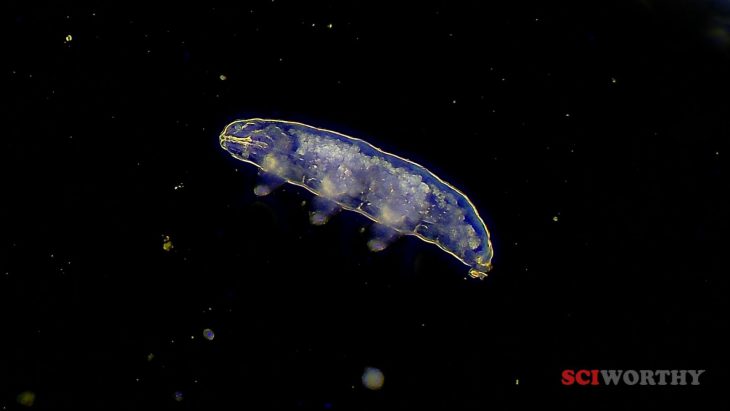How life on Earth began is a question that our ancestors pondered and that scientists are trying to answer using modern empirical tools. Until now, the “panspermia hypothesis”, which suggests life originated on other worlds and then came to Earth on floating rocks from space, remains an untested speculation.
Scientists at the University of Kent exposed microscopic animals called tardigrades to high shock pressures similar to the kind that would occur when rocks fall to the surface of a planet or moon.
Scientists interested in this particular origin story disagree on how panspermia could have occurred. One view of panspermia suggests that meteorites from space strike the surface of planets or moons and launch rocks from that surface back into space. If any of those planets or moons had life, so would the projectiles. These rocks then travel for years through the harsh environments in space and may fall on other worlds. This means the life that is being transferred has to survive both the extremes of space and the shocks during the launch and landing of the rock.
Tardigrades, also called water bears, are known to survive extreme conditions like low temperatures, high radiation, and the vacuum of space. These “superpowers” make them ideal for this kind of study. However, tardigrades can only tolerate these conditions when they are in a state called tun. When tardigrades are in tun, they curl up into a ball and slow down their metabolism, similar to how reptiles hibernate during winter.
The researchers froze a sample of tardigrades in a sabot, a mold that holds bullets (in this case, an ice block containing tardigrades) properly inside a gun, for 2 days and allowed them to go into tun state. The sabot was then fired into the sand using a gun that uses pressurised gas at different speeds that the rocks might encounter. Six shots were fired in the range of 0.5-1 km/s (1120-2230 miles per hour), the speed of a typical fighter jet. The sabots were then recovered to check if tardigrades survived the shock.
Every good scientific experiment needs control. For this one, scientists froze 20 tardigrades (sending them to tun state) and then thawed them without being fired. This provided the scientists with a baseline effect, so they would know how much of the outcome was due to freezing and how much was due to the shock. All of the control tardigrades were revived within 8-9 hours.
The tardigrades that were fired above the speed of 0.8km/s barely survived the shocks. The ones that were shot at lower speeds took a long time to revive, which shows that they suffered damage from the shock. It was seen that shock pressures above 1.14 GPa killed the tardigrades. That shock pressure is several thousand times stronger than what we feel when we abruptly stop our car.
Does this experiment mean that panspermia is true? Unfortunately, it does not give us nearly enough information on it’s own. However, this experiment does tell us about the range of shock pressures that tardigrades can survive, which can help scientists design experiments for space exploration. Jupiter’s moon, Europa and Saturn’s moon, Enceladus have oceans beneath them that eject water in massive plumes. Missions like Europa Clipper and JUICE are being planned to collect water and ice samples from these plumes. Spacecraft travel at very high speeds and similar shocks can be expected while collecting plume samples. The results of this study remind us that when collecting samples from space, they must be protected from inhospitable conditions so that any living specimens survive a return to Earth.


